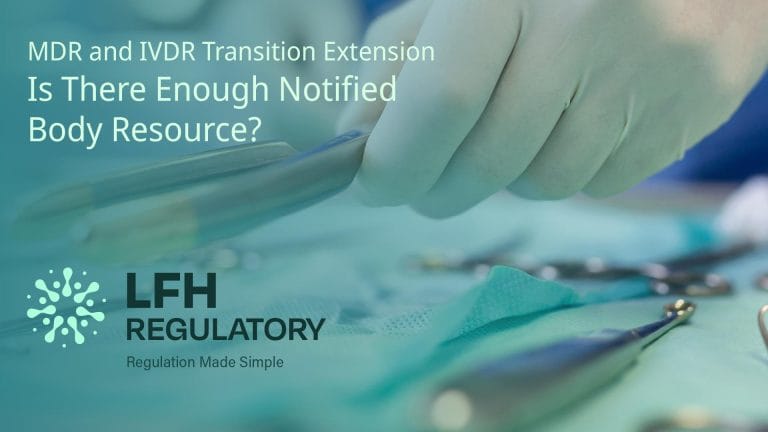Technical file (TF) documentation is a structured compilation of documents demonstrating the device meets the regulatory requirements of the EU MDR 2017/745 and EU IVDR 2017/746. The TF must be compiled to meet the requirements of the EU MDR or EU IVDR, and be retained for the device lifetime: at least 10 years after the last product is placed on the market and 15 years if it is implantable.
The technical file is essential for maintaining regulatory compliance as it evidences that each regulatory requirement has been considered and that the device meets the safety and performance standards. The compilation of documents is a legal requirement.
The Medicines and Healthcare products Regulatory Agency (MHRA) and EU Competent Authorities may request TF documentation at any time. Manufacturers, or their authorised representatives, must ensure documentation is updated when necessary and readily available upon request.
What Belongs in a Technical File?
Device Overview: Description, variants and accessories, intended use of device.
Labelling and Information supplied by the manufacturer
Label artwork, including the CE marking requirements and warnings, etc. Instructions for Use (IFU) and labels must be available in the languages of countries where they are being sold (EU).
Design and Manufacturing information: Details of the design process and manufacturing information. Design details include user needs, specifications, design inputs and outputs, design validation and verification. Manufacturing information includes bill of materials, manufacturing processes and quality control and inspection.
General Safety and Performance Requirements (GSPR): The general safety and performance requirements are set out in Annex I of EU MDR 2017/745 and IVDR. You must demonstrate compliance with this list of requirements to ensure your device is safe; achieves its intended performance; and risks are minimised.
It is also important to outline the applicable legislation, standards and documentation as evidence for meeting requirements.
Risk Analysis: Manufacturers must complete a full risk assessment in accordance with ISO 14971, including the risk mitigation and controls implemented after identifying the non-acceptable risks. The risk assessment is an ongoing process throughout the lifetime of the device and involves the continual evaluation of post-market data.
Verification and Validation (V&V): Verification ensures design outputs meet the design inputs and validation ensures the final product meets the intended purpose and user needs.
V&V is critical as it provides objective, traceable evidence that the device design conforms to both regulatory and user requirements.
Clinical evaluation/ Performance evaluation. Clinical and performance data is needed to demonstrate the clinical benefit of the device. This is a planned and systematic process to collect, appraise, and analyse clinical data supporting a device’s safety and performance and clinical benefit. It includes both pre-market and post-market evidence and must be maintained throughout the device life cycle. Clinical investigations may be conducted when public literature data is not sufficient to evidence the clinical benefit and safety and performance claims of the device.
PMS documentation:
PMS Plan to demonstrate how the device performance is evaluated throughout the time it is placed on the market. A continual assessment is required for all devices with a CE mark.
Declaration of Conformity: Statement to demonstrate the device is compliant to EU regulations and meets the applicable standards.
If applicable, the details of the designated Notified Body (EU) involved in the conformity assessment.
What do regulators expect in a technical file for MDR/IVDR?

Structuring for Clarity and Audit Success
How should a medical device technical file be structured?
EU MDR and EU IVDR define the technical documentation content, with a specific structure in Annex II (technical documentation) and Annex III (post-market regulations). Generally, the file should be organised considering the following:
● As a full process from design validation through to post-market surveillance.
● Utilising a logical structure with easily labelled headings and sections, with clear contents for navigation.
● By tracking all document versions: document changes, dates, and approval.
Do I need separate technical files for EU MDR and UK MDR compliance?
You can create one integrated technical dossier for both the EU (CE) and UK (UKCA) markets, carrying shared documentation like design specs and test reports. However, you must include separate Declarations of Conformity for each market (aligned with respective legislation and standards) and meet each region’s specific language, standards, representative and retention requirements.
Avoiding Common Technical File Mistakes: What are the most common technical file mistakes to avoid?
Inconsistent or Incomplete Information:
Missing information or unclear structure can make it difficult for the assessor to interpret availability of information.
- Poor Risk Assessments: Failing to mitigate risks fully or missing clinical hazards associated with use and performance of a device can mean the risk assessment is rejected for appropriateness. Ensure you have considered all risks associated with use and performance of a device and ensure this is adequately aligned with ISO 14971 standards.
- Inadequate Clinical Evaluation: Inadequate evidence to support intended purpose and clinical benefit is another common reason for delays and rejections. Be specific with your clinical claims and ensure the evidence supports such claims.
- Incorrect Classification: Misclassifying your device can steer it into the wrong regulatory pathway, leading you to produce unnecessary documentation or follow a conformity assessment route that may not apply to your device.
Misclassification often leads to rejected submission or delays as you rectify documentation and resubmit via the correct process. Determining the classification is a critical first step in understanding the regulatory requirements and avoiding wasted time and resources.
- Rushing documentation – Rushing documentation to hit a timeline submission can be evident with missing information, lack of structure and consistency.
- Failure to dedicate enough time to risk assessment and clinical evidence –
These two areas take a considerable amount of time and are imperative to supporting the clinical benefit as well as safety and performance claims. - Inconsistent or contradictory information – Mismatches of names, variants, serial numbers across documentations cause delays and can easily be prevented by double checking the documentation thoroughly.
- Poorly prepared DoCs – Errors in the DoC include outdated standards and errors in details. Make sure to include all information outlined in regulations.
Conclusion
A CE technical file is a legally mandated, structured file that describes the full narrative of the product from design and development stages, performance and safety assessments, to labelling and conformity declarations.
Regulators expect the information to be complete, thorough and easily accessible. It is advised to consult regulatory experts early, so you are aware of the expectations relative to your specific device and appropriately consider all regulations and standards.
What is a technical file in medical device regulation?
A technical file is a structured set of documents that shows a medical device meets EU MDR 2017/745 or EU IVDR 2017/746 requirements. It evidences safety, performance, and compliance throughout the device’s lifecycle.
How long must a technical file be kept?
Manufacturers must retain the technical file for at least 10 years after the last product is placed on the market, or 15 years if the device is implantable.
Who can request access to a technical file?
The MHRA and EU Competent Authorities may request access at any time. Manufacturers or their authorised representatives must ensure the file is up to date and readily available.
What are the key components of a technical file?
Typical sections include device description, labelling, design and manufacturing details, General Safety and Performance Requirements (GSPR), risk analysis, verification and validation (V&V), clinical or performance evaluation, post-market surveillance (PMS) documentation, Declaration of Conformity, and Notified Body details (if applicable).
Do I need separate technical files for EU MDR and UK MDR?
No, you can create a single technical dossier that covers both CE and UKCA requirements. However, you must include separate Declarations of Conformity and meet each region’s specific standards, language, and retention rules.
What are common mistakes to avoid when compiling a technical file?
Frequent issues include incomplete or inconsistent information, weak risk assessments, inadequate clinical evaluation, incorrect device classification, rushing documentation, and poorly prepared Declarations of Conformity.
Why is structuring the technical file important?
A clear, well-organised file with version control makes it easier for regulators to audit and assess. Poor structure or missing information can lead to delays, rejections, or additional requests from authorities.
About the author: Chloe Johnson

Chloe supports medical device innovators by ensuring regulatory compliance through a meticulous approach to documentation. With a BSc in Neuroscience from the University of Manchester and an MSc in Clinical Neuroscience from UCL, where she explored TMSEEG as an epilepsy biomarker, she leverages a rigorous scientific research background and a detailoriented approach to technical file documentation, bringing precision and clarity to regulatory deliverables. Her experience lies in developing QMS systems, risk management files, and postmarket documentation for UK and EU markets. She is committed to advancing safe, effective healthcare solutions while continually learning to bolster LFH’s Regulatory success. Chloe’s credibility extends into academic research, reflecting her active contribution to cuttingedge neuroscience. In June 2025, she co-authored “TMSEEG in Postictal Psychosis of Epilepsy”, with research staff at the Chalfont Centre for Epilepsy, and is currently collaborating with colleagues at the University of Manchester to produce a forthcoming publication in fMRI imaging.



